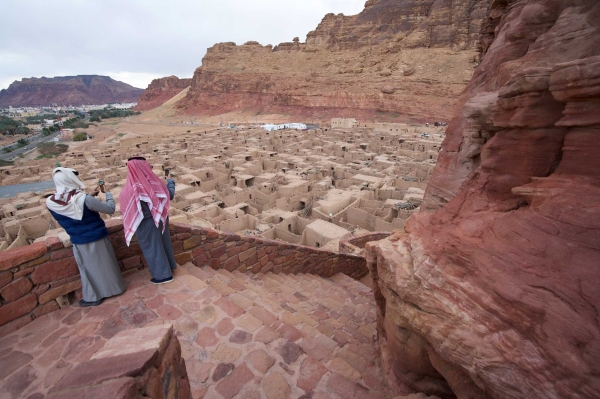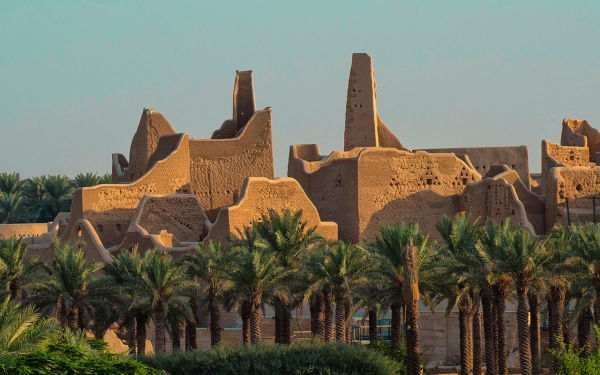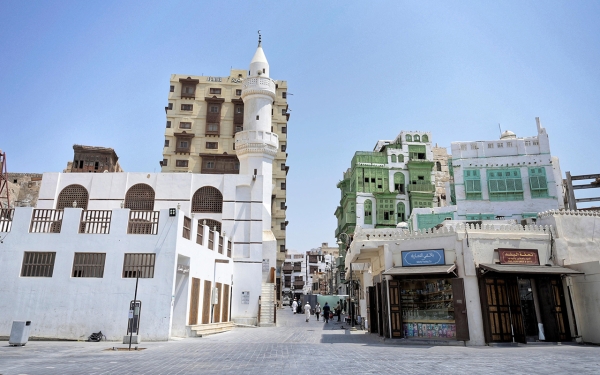



The National Urban Heritage Register is an entity that aims to identify, classify, and document urban heritage buildings and sites across the Kingdom of Saudi Arabia. It is a branch of the National Antiquities Register, encompassing all types and forms of urban heritage sites and antiquities It was established by the Heritage Commission to serve as a national document for urban heritage sites in the Kingdom.
Goals of the National Urban Heritage Register
It aims to transform the urban environment from mere residential sites into a repository of historical, symbolic, and cultural memory through its designs and expressions. Additionally, it seeks to make the urban environment a visual interface that represents the identity of the place and an essential aspect of its natural composition.
It strives to give buildings cultural value by using artistic texture as a core element to preserve the history of the place. This is achieved through legislation, decisions, and laws that ensure the preservation of urban heritage in the Kingdom.
It establishes the formation of an effective and comprehensive administration that contains all urban and cultural heritage resources, making them available to various segments of society. This administration will serve as a reference for the diverse urban and historical elements found throughout the Kingdom’s provinces, cities, and governorates.
Services of the National Urban Heritage Register
The services and tasks of the National Register of Urban Heritage are to register and classify urban heritage buildings and sites in electronic records, process requests to cancel registration in urban heritage sites, and handle services such as requesting approval to dispose of an urban heritage site, canceling the protection zone, approving transferring ownership, and selling urban heritage sites.
The national register plays its role in geographic information systems by collecting and saving information in designated databases. This is done to process and classify the information according to the laws used in museums. Additionally, it sorts the descriptive and spatial data included in the dashboard of the urban register.
Steps to classify urban heritage sites
The National Urban Heritage Register imposes several procedural steps leading to the classification and registration of urban heritage sites. These steps begin with receiving applications from any person or entity, followed by the classification of the heritage site and determination of its protection area. Additionally, information is collected prior to applying selection criteria, which include age, historical importance, rate of dilapidation, urban design, rarity, authenticity, and availability of services and facilities.
Efforts of the Heritage Commission in the National Urban Heritage Register
The efforts of the Heritage Commission in the National Urban Heritage Register have revealed a set of results and statistics regarding urban heritage sites, including both urban heritage areas and buildings. As of the first stage, the number of heritage sites reached 1,024. The distribution of urban heritage areas and buildings across administrative provinces is as follows: 232 in Riyadh, 131 in Aseer, 112 in the Eastern Province, 103 in Makkah al-Munawwarah, seventy-eight in Jazan, seventy-two in al-Bahah, sixty-nine in Qassim, fifty-eight in al-Madinah al-Munawwarah, forty-one in the Northern Borders, thirty-eight in Tabuk, thirty-three in Najran, thirty-one in al-Jawf, and twenty-six in Hail. The total number rose to 3,646 registered urban heritage sites across all provinces of the Kingdom as of January 18, 2024.
Nominating fifty thousand urban heritage assets
In 2023, the Heritage Commission nominated fifty thousand urban heritage assets across all provinces of the Kingdom, in accordance with the Law of Antiquities, Museums, and Urban Heritage. The goal was to develop a plan for registering, classifying, and encoding these nominated assets in the Urban Heritage Register, following their designated registration series. The process for registering urban heritage assets in the Kingdom involves five main stages as part of the registration series: discovering an urban heritage asset, nominating the asset, registering it in the Urban Heritage Register, classifying it, and finally encoding the urban heritage asset.
Related quizzes
Related articles

